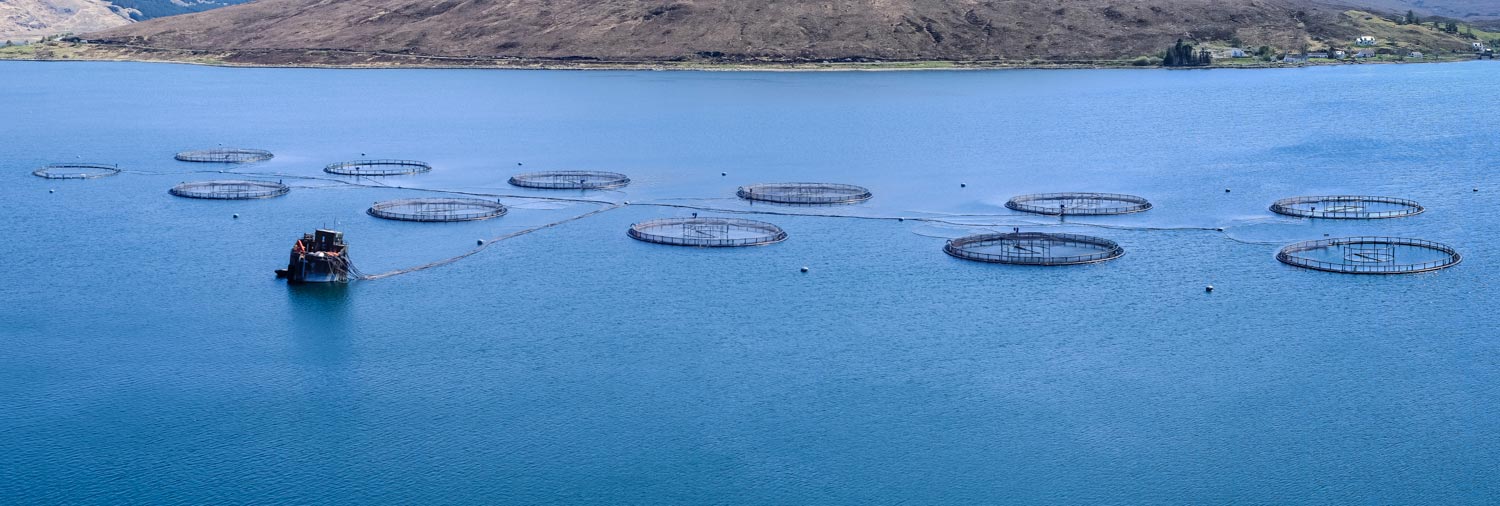By Jason Tucker
Farm raised salmon may represent a serious threat to wild fish populations.
A recently released Scottish study has demonstrated that salmon farming in estuaries used by wild salmon results in a 20% loss in returning wild salmon, mostly as a result of sea lice infestation due to the unnatural conditions fostered by net pen fish farming. It also tracked losses due to genetic introgression from escaped fish.
The study was commissioned by the International Council for the Exploration of the Sea, also known as ICES.
The original question presented for study was “Advise on possible effects of salmonid aquaculture on wild Atlantic salmon populations focusing on the effects of sea lice, genetic interactions and the impact on wild salmon production.”
Some important points from the study (copied directly from it so I don’t get them wrong) are:
-The survival of Atlantic salmon during their marine phase has fallen in recent decades. This downturn in survival is evident over a broad geographical area and is associated with large-scale oceanographic changes. Viewed against current marine mortality rates commonly at or above 95%, the ‘additional’ mortality attributable to sea lice has been estimated at around 1%.
– In some studies, the impact of sea lice has also been estimated as losses of returning adult salmon to rivers. These estimates indicate marked variability, with losses in individual experiments ranging from 0.6% to 39%. These results suggest that sea lice induced mortality has an impact on Atlantic salmon returns, which may influence the achievement of conservation requirements for affected stocks.
-Each year, large numbers of domesticated salmon escape from commercial fish farms. While many of these are reported, the true number of escapees is likely to be significantly higher. Escapees are observed in rivers in all regions where farming occurs, although the numbers of escapees vary both spatially and temporally. It has been noted that in some rivers in some years, the numbers of escapees have approached 50% or more of the spawning population.
-The spawning success of escaped farmed salmon is much lower than wild salmon. Despite this, genetic studies have demonstrated that farmed salmon have displayed widespread introgression in a large number of Norwegian populations where this has been investigated. Introgression has also been shown in other countries, but the full extent of introgression remains to be investigated.
In an interesting twist, industry spokesmen are trumpeting this study as a victory, citing the fact that sea lice infestation on escaped fish (wild smolts returning to sea) due to salmon farms only result in an additional 1% mortality. This ignores the fact that the mortality rate for escaped smolts is already 95%. This means that the additional 1% loss actually represents a 20% loss of returning fish, a number that wild Atlantic salmon can hardly support. When you factor in genetic introgression from escaped fish, the picture starts to look pretty grim.
As anglers and conservationists, we are deeply troubled by these findings. We hope that this study and others will cause governments to move to protect wild salmon stocks. Atlantic salmon farming in estuaries is a multi-billion dollar industry, but we are just now beginning to understand its impacts.
Jason writes the fine blog Fontinalis Rising
Jason Tucker
Gink & Gasoline www.ginkandgasoline.com hookups@ginkandgasoline.com Sign Up For Our Weekly Newsletter!

I might be quibbling here, but pen vs. wild crossing is not genetic introgression. Introgression is much more genetically complex, and often/usually refers to hybridization between species or at least widely divergent sub-species. These are regular Atlantics with regular Atlantics.
Like I said, I copied parts of the report in order to share it, so I wouldn’t get the science wrong. I’m assuming the scientists who put the report together used the correct terminology.
Domestic Atlantic salmon bred for net pen farming are very different from wild stock, kind of like the difference between broiler chickens and red jungle fowl, the wild forebear of chickens.
Funny how a point of view changes. For many years, in Oregon, a fish with “sea lice” on it was a good thing. You had just caught a fish fresh out of the ocean. Maybe what we called sea lice were some other benign creature.
A couple of sea lice is a different proposition than 50 to 60 or more. It is all about the numbers
Thanks…I had no idea how many could attach…and we did only have 2-3 per fish.
They are the same creature. Net pen salmon farming causes unnatural concentrations of sea lice, which cause mortality in juvenile salmon. Normal concentrations of sea lice on adult fish do not normally harm them.
The link published in the story does not seem to be working. I believe this is the correct link:
http://ices.dk/sites/pub/Publication%20Reports/Expert%20Group%20Report/acom/2016/WKCULEF/WKCULEF_2016.pdf
Cheers,
Seaver